By Dave Workman | Senior Editor
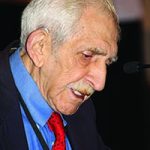
Tartaro

Gottlieb
The fight for freedom is an ideological war, a political war, a legal war and a war for the minds and hearts of men, women and children.
So spoke Joseph Tartaro, president of the Second Amendment Foundation and a veteran of more than a half-century on the front lines of the battle between gun rights and gun control. It is a never-ending war, he explained, because anti-gunners “want to erase all civil rights, one amendment at a time.”
That was how the 33rd annual Gun Rights Policy Conference began in Chicago, and the theme continued through the entire weekend of panel discussions and reports from some of the top names in the Second Amendment movement.
According to SAF founder and Executive Vice President Alan M. Gottlieb, it was the biggest conference in the history of these events, with some 800 people actually attending and more than 115,000 watched all or parts of the conference via live streaming. There were more than 70 speakers covering all manner of subjects, from state and federal legislation and elections to the media, the firearms industry, and legal actions challenging various gun control laws.
Tartaro was matter-of-fact about the ongoing fight over Second Amendment rights.
“Once you enlist,” he told the audience of activists, “you enlist for the duration.”
Tartaro was followed by Gottlieb, who reminded the audience that anti-gun billionaire Michael Bloomberg was, at least at the time, considering a run for president in 2020. He also noted that the Environmental Protection Agency has attacked gun owners by trying to push rules and regulations to prohibit lead in ammunition.
He cautioned the audience about so-called “keyboard commandos” who “chase off (potential) allies.”
Gottlieb also discussed the “establishment media” which has marginalized itself.
“One reason we get attacked so much,” he said, “is because the media knows that the only reason (Donald) Trump is in the White House is because gun owners…flipped the election.”
Gottlieb also chided “lazy” gun owners for sitting on the political sidelines while a core group of activists does all the work. However, he observed, these are also the first people to take advantage of any rights victories.
“Complacency is dangerous,” he warned. “Lazy gun owners need to get engaged.”
Two members of the National Rifle Association’s Board of Directors reported on what that organization has been doing, and what needs to be done over the horizon.

Walker

Lee
Linda Walker, who is also vice president of the Buckeye Firearms Association, lauded the elevation of Lt. Col. Oliver North (USMC-Ret.) to the office of NRA president. She said the organization had grown to 6 million members in the aftermath of the Parkland high school shooting.
“It is time we put a warrior in front to lead us,” she said about North.
She was joined at the podium by Willes Lee, a director from Hawaii who is also the president of the National Federation of Republican Assemblies. He reported that President Trump has, without much fanfare, been able to appoint 60 judges to the federal courts. That was one of Trump’s campaign promises, an effort to bring more balance to the courts. His appointment of Associate Justice Neil Gorsuch was also the fulfillment of a campaign promise.
He said this year’s midterm election is “a prelude to 2020,” and that the election would determine who picks the next justices for the high court.
Walker and Lee were followed by a federal affairs panel that took a hard look at the midterm elections and beyond, and at the laws that have been proposed but not passed.
Federal Affairs

Pratt
Erich Pratt, executive director of the Gun Owners of America, reported that some good things have happened during the first two years of the Trump administration. Barack Obama’s regulations regarding gun bans for Social Security recipients who may need assistance with some things has been overturned, and “all major gun control laws in Congress” have been stopped. The House of Representatives passed national concealed carry reciprocity, but it languishes in the Senate. Also, regulations to ease the acquisition of suppressors has stalled, and Pratt criticized the “spineless GOP leadership for allowing so-called “red flag” legislation to move forward.
Joe Waldron, legislative director for the Citizens Committee for the Right to Keep and Bear Arms, reminded the audience that they are the “gun lobby.” He warned that if Democrats take over on Capitol Hill in January, the Trump agenda, including the appointment of conservative, pro-gun judges to the federal bench, would be derailed.
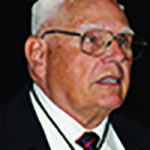
Waldron
He said 86 anti-gun bills had already been filed in Congress, and the danger is that gun control amendments could be added to so-called “omnibus” bills.
“You’ve got to be attentive,” he said. “Eternal vigilance is the price of liberty…and that’s never been more true than it is today.”
Waldron recalled the Parkland, FL, school shooting, noting that authorities failed at all levels to enforce existing laws that might have prevented the shooter from being able to obtain a gun and take it to the school. Police had been called to his home several times and he could have been charged with domestic violence or some other crime, but he wasn’t, Waldron noted.
But the shooting aftermath became a gun control campaign, and gun owners are still fighting.
State Legislation
There were two state affairs panels this year featuring ten speakers from as many states to provide good and bad news.

Cushman
John Cushman, president of the Sportsmen’s Association for Firearms Education (SAFE) in New York reported that there had been 243 anti-gun bills introduced to lawmakers in Albany this year. While most of those bills passed in the Assembly, he said Second Amendment activists were able to hold those bills in the Senate “with one vote.” That was the margin.
The message that must be sent to lawmakers is that banning guns does not stop problems,” Cushman observed.

DeLuz
Craig DeLuz with the Calguns Foundation reported that a proposed bullet tax had been beaten back, but he acknowledged that California is “behind enemy lines.”
“There is no shortage of bad ideas that come out of Sacramento,” he observed.
He was especially critical of “red flag” extreme risk protection orders, which allow seizure of firearms based on a complaint without due process.
“Free speech, private property and due process have all become suspect,” he lamented.
Dave Kopp, president of the Arizona Citizens Defense League, warned that “the other side is doing a real good job.”
He also focused on so-called “gun violence restraining orders,” which he considers a “really bad idea.”

Kopp
In Arizona, they are called STOP (for Severe Threat Orders of Protection). He said the reason they are terrible is because proponents have so many people thinking they are a good idea, including people “on our side,” because “who wants crazy people to have guns?”
When the law was proposed last year, gun owners managed to kill the legislation but the governor is promising to bring it back. So the response is to propose something better as an alternative.
Kopp was followed by Richard Pearson, executive director of the Illinois State Rifle Association. Noting that Illinois is a tough state, he recalled that this past spring, several gun control measures were introduced. Two of them passed but Gov. Bruce Rauner had apparently indicated that he will veto all of the measures, Pearson said. That is why gun owners in the state geared up to support Rauner’s re-election campaign.
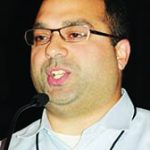
Roubian
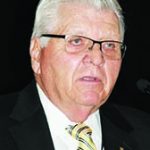
Pearson
Alexander Roubian, president of the New Jersey Second Amendment Society, recalled the story of Carol Bowne, a woman who was murdered in her own driveway by a man against whom she had a protection order. She had been waiting for many weeks for approval by the local police chief so she could get a permit to purchase a gun for her own defense.
“The left wants to destroy our culture,” he stated. “If the Second Amendment dies, we all die with it.”
The second state affairs panel began with a report from Sean Caranna, founder and co-executive director of Florida Carry, Inc. He reported on his group’s activities and the problems they face with politicians in both parties, and gun control groups that have gained a foothold in the state.
Caranna noted that things had been “looking up” until the Parkland high school shooting, which changed the dynamic politically for the foreseeable future.
John Monroe, vice president and legal counsel of Georgia Carry, Inc., offered a history of the concealed carry movement in his state, and how his group has worked to expand the rights of law-abiding gun owners. In the past, gun owners could not carry firearms in a lot of places, but that has changed.

Pennak
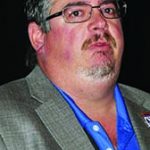
Caranna
Mark Pennak, president of Maryland Shall Issue, discussed the various legal issues his group has had in a state with some of the most restrictive gun laws in the nation. He said the organization has been able to make the law work in many cases, including one first amendment case now in court.
When the state tried to ban so-called “high capacity magazines,” Pennak’s group reminded lawmakers that the state has some strong property laws, and that there were about 750,000 such magazines in the state. At an estimated $30 apiece, that would cost the state some $22 million, he estimated. The bill died, he noted.
“We’re litigious because we have to be,” Pennak said.
Paul Valone, who flew from storm-ravaged North Carolina to report on activities in that state, recalled the old state law that banned firearms and ammunition outside the home during an emergency. That law has been changed.
He noted that a former governor once declared an emergency due to a pending storm on the same day that the dove hunting season opened. Essentially, that turned tens of thousands of hunters into criminals.
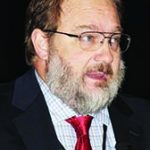
Wallace

Valone
He recalled the case of Bateman v. Purdue, which struck down the state of emergency ban as unconstitutional. Grass Roots North Carolina won that case with help from the Second Amendment Foundation and attorney Alan Gura. The state did not appeal, so there was no opportunity to get this case in front of the Supreme Court.
Earlier, GRNC issued alerts as Hurricane Florence approached, and some cities tried to enforce the old ban. In each of those cases, the cities rescinded those bans when reminded by GRNC that the ordinances were unconstitutional.

Monroe
Jim Wallace, executive director of the Gun Owners Action League in Massachusetts, detailed how his group works in the Legislature to fight increasingly restrictive gun control laws.
“We kind of got hammered this year,” he acknowledged, “and it was all because of Parkland.”
But, he cautioned the audience that the shooting was the result of failures by local government in the Parkland…you can’t defeat them, expose them for what they are,” Wallace said.
International Affairs

Patterson
Sandwiched between the two state panels was Rick Patterson with the Sporting Arms and Ammunition Manufacturer’s Institute, with a report on the firearms industry’s overview of the gun rights battle.
He noted that the contention from anti-gunners that more guns means more crime is not supported by any facts. Gun control groups, he observed, simply want to control everything, and it is that way on the national and international scale.
Industry managed to stop an effort to ban all lead hunting ammunition, but the same fight is underway now in Europe, and it is an uphill battle, he said.
Underscoring Patterson’s reference to the international situation, Matthew Goldstein, senior counsel and head of the International Trade Group at Farhang & Medcoff, reported on the current situation with the International Traffic in Arms (ITAR) regulations.

Goldstein
He narrowed the focus to discuss the case involving Defense Distributed, where founder Cody Wilson had just turned over control as he was facing a criminal complaint in Texas on an unrelated subject. That is the Austin, TX-based company currently locked in a bitter legal fight to be able to publish online plans and schematics for 3D printed guns.
Goldstein noted that regulation of international arms trading had become “overly restrictive,” but that changes from the Obama administration to the Trump administration had brought changes in enforcement.
The Defense Distributed case made that clear, because it was settled after Trump took office. He cautioned the audience that any information posted on the Internet “invariably…reaches foreign (internet) servers.”
Media Perspective

Gutowski
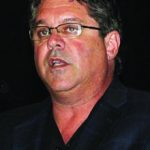
Walters
When it comes to dealing with the media, radio host Mark Walters from Armed American Radio advised the audience that perception is reality, and that people would believe what they have been told about gun owners and the Second Amendment community.
Steve Gutowski from the Washington Free Beacon challenged the audience with a question about how we can effectively change news coverage of the gun issue.
“I think the majority of reporters are interested in getting their stories right,” he suggested.
He encouraged activists to form relationships with reporters and to become reliable sources of accurate information.
“If they (reporters) reach out to you to be a voice in the gun rights community, I would say take them up on that opportunity,” he said.
He was followed at the podium by Stacy Washington, a writer and reporter now hosting Stacy on the Right, a syndicated radio program. She is a mom, NRA member, a member of the National Shooting Sports Foundation, and an Air Force veteran. She acknowledged that she likes guns.

Washington

Workman
She was suspended from writing at the St. Louis Post Dispatch for writing a favorable column about the NRA. She terminated their agreement and began writing for NRA and moved into radio. Today she is broadcasting nationwide.
The Gun Mag Senior Editor Dave Workman wrapped up the panel by noting that, as journalists, “we have a responsibility to tell what we believe is the truth, and stay as close to the facts as we can get them and to not mislead anybody.”
He closed by advising the audience to work with reporters and trust that they want to get the story right.

Hoffman

McCullagh
Leading a panel on how culture drives gun politics, Rob Pincus, executive director of the Personal Defense Network, cautioned that gun owners have “lost control” of how the image of guns and their owners is presented. Those images have been “twisted,” he said, although “we as a community have fought very well.”
He has spent more than three decades in the gun rights battle, and recalled that when he became involved, there were somewhere around 2- to 3-million concealed carry permits in the United States. Nowadays there are more than 17.5 million.
P incus also discussed how gun rights have expanded across the country in many places, and that is underscored by the adoption of “constitutional carry” laws in more than a dozen states.
“We’ve seen a dramatic change in our culture, in the gun culture,” he said. “But we’re losing the cultural war.”
Lara Smith, national spokesperson with the Liberal Gun Club, challenged the audience by asking how many people talk about guns as a civil right?
“The Second Amendment is a civil right,” Smith commented.
She advised people to talk about guns as a right, noting that most gun owners talk about self-defense and other aspects of gun ownership, but they don’t talk about guns as a right.
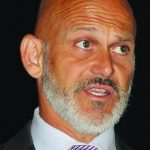
Pincus

Smith
Smith was followed by Gene Hoffman, chairman of the Calguns Foundation. He noted that California is “by far the single largest retail firearms market in America.” Yet the state remains the butt of jokes about guns and gun control.
He reminded people that the Black Panthers did the most important civil rights activity with firearms in California. And then Ronald Reagan, as governor, banned open carry in the state.
He said the Parkland shooting has changed one thing. Because of that, “the other side” now has genuine grassroots, and they are actively preaching to people about gun control.
Declan McCullagh, a contributor to Reason Magazine, recalled how the governor of Connecticut compared the NRA to a “terrorist organization” and how the New York governor called NRA an extremist organization. But those officials are not simply targeting the NRA, they are criticizing all gun owners, he emphasized.
The problem is that this sort of rhetoric is insidious, he intimated, because by demonizing organizations like the NRA or SAF, it becomes much easier to discriminate against them and their members. This has already happened to other groups, such as pro-life organizations, he said.
Ultimately, this can lead to social ostracizing that might include declined applications for credit card and banking services, advertising and other things. They might even be shunned to the point of being unable to use platforms such as Facebook or Twitter, he suggested.
“The point of de-platforming is not to win debates,” he warned, “but to exclude the other side from the debate entirely.”
De-platforming “is a way to remove people from polite society,” he warned. Eventually, what is considered polite discussion is narrowed. However, he said people can fight back.
Legal Perspectives
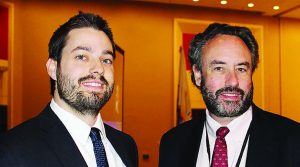
L to R: Joseph Greenlee and David Kopel.
The afternoon session, following the annual awards luncheon (See separate report elsewhere in this issue), began with a report from attorneys David Kopel and Joseph Greenlee on the Second Amendment doctrine.
Greenlee opened the discussion, going through a history of firearms and Second Amendment development. He detailed how firearms possession was woven into the American development, from the early days of the colonies prior to the Revolution. Virtually all of the colonies had some type of militia, and as a result the colonists had to have firearms, from at least age 16. They had to provide arms and ammunition.
The typical age span for belonging to the militia was 16 to 60, and Greenlee went down the list of all the colonies, providing histories of their individual militia requirements.
Kopel followed with more history, noting that the history he and Greenlee were discussing would be published in a law journal.
A constitutional scholar, Kopel discussed the militia acts, and how court rulings have dealt with various gun rights cases over the years.
He discussed one Kansas Supreme Court decision that cemented the necessity of having arms, and passing along the tradition to the following generation. That opinion suggested that if someone were not trained in the use of firearms, “he seldom learned to use them.”
“Michael Bloomberg understands that just as well as the Kansas Supreme Court did,” Kopel observed. “And that is the ultimate purpose behind the Bloomberg campaign to prohibit young people from possessing any firearm of any type.”
“Part of that long term battle is demographic destruction of gun ownership,” he added. “The more barriers you can put up to gun ownership, the more you can discourage people when they are young from being able to use and perhaps get interested in firearms, then over the long term, the number of gun owners diminishes and diminishes and diminishes, leaving an ever shrinking group of individuals interested in defending the right, and that is exactly how the right to arms in England…was exterminated.”
Kopel also warned that anti-gunners will use arguments about certain age groups committing more crimes than older groups, and thus increasingly restrictive gun laws could be ramped upwards, making it more difficult for younger people to have guns.
However, if courts follow the Second Amendment as it was originally intended, he concluded, then bans on firearms for younger people are almost certainly unconstitutional.
Reports from three attorneys involved in SAF litigation provided a perspective on the progress to restore the Second Amendment.
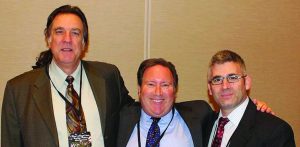
L to R: Don Kilmer, David Sigale and Mattew Goldstein.
Back at the podium was Matthew Goldstein, who represents SAF in the Defense Distributed case, and explained how the First Amendment issue is really at the heart of the case. He noted that when the government opened up a comment period on 3D printing and the International Traffic in Arms (ITAR) regulations, more than 10,000 comments were received.
The government had agreed to a settlement with Defense Distributed but several state attorneys general, led by Washington Attorney General Bob Ferguson, intervened at the last minute.
Attorney Don Kilmer of California provided an overview of several cases in that state. He joked that he “litigates behind enemy lines.”
Kilmer explained the win-loss/setback of litigating in California, where even good rulings by three-judge panels can be tied up by appeals for a full en banc panel, which typically reverses panel decisions regarding firearms.
“There is still work to do,” he assured. “The Second Amendment laid in slumber for almost 200 years.”
Concluding the panel discussion, attorney David Sigale discussed cases he has and is working for SAF, and how they go to the Seventh Circuit Court of Appeals
SAF is suing Deerfield, IL, because of a ban on so-called “assault weapons” by ordinance of the village council. Legal actions have been filed and it may take a while to see any progress.



